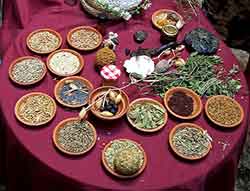Roman Recipes Sauces (Condimentum) Main
S Sauces made from vinegar, honey, pepper, herbs and spices were also popular. The Romans seemed to be very keen on a mixture of sweet and sours — much like modern Chinese cooking.
Sauces made from vinegar, honey, pepper, herbs and spices were also popular. The Romans seemed to be very keen on a mixture of sweet and sours — much like modern Chinese cooking.
The term “condiment” is Latin in origin – from condimentum, which means “spice, seasoning, or sauce.” Generally, anything referred to as a condiment must have liquid involved in it (distinguishing it from a spice, which is usually dry), and be viable for a long period of time. The Romans seemed to be particularly fond of sauces, as they gave a cook the opportunity to make a dish seem a little bit more exciting that it may have been without the sauce.
From the very beginning of food consumption, humans have been on a quest to make their food taste better. So, after the addition of simple salt or local spices left them unsatisfied, the use of condiments has been the way to go, while also providing a way to challenge the autonomy of the chef by altering a dish to the diner’s personal taste. As they are with modern Romans (and other cultures), sauces and marinades were an essential element in ancient Roman cuisine. Many Roman meals were served with sauces.
This certainly applied to a staple of the Romans: garum a fermented fish sauce, which was made by layering fish with salt and leaving it to dissolve and ferment for several weeks to months. After all this, the garum was ready for use (after careful filtering). While it might sound (and look) disgusting to us, it is actually quite good and was used by the Romans much like modern people use ketchup. Although this might not sound so appetizing to a Western palate, perhaps, it's quite popular and is a common ingredient in many East-Asian recipes. Just as you would expect to see soy sauce in a Chinese restaurant, gochujang in a Korean establishment, and olive oil when dining modern Italiano, garum was a fixture on every Roman table, and also an ingredient in many dishes. So perhaps it’s not surprising that it was also the basis for at least some of the condiments we love today:
- Worcestershire Sauce: The use of similar fermented anchovy sauces in Europe can be traced back to the 17th century. The Lea & Perrins brand was commercialised in 1837 and was the first type of sauce to bear the "Worcestershire" name.
- Mustard: Mustard was one of the most common sauces in ancient Rome. Used also alone, it appears as an ingredient for more complex recipes in the cookbook attributed to Marcus Gavius Apicius, in his De Re Coquinaria, but who, sadly, doesn’t give us his own recipe for mustard. The name is derived from mustum ardens, meaning “burning must,” which is not very enlightening, except that it tells us that the first mustards were originally very spicy. On this site, we have the mustard recipes of Palladius and Columella here... Give forth a look.




















